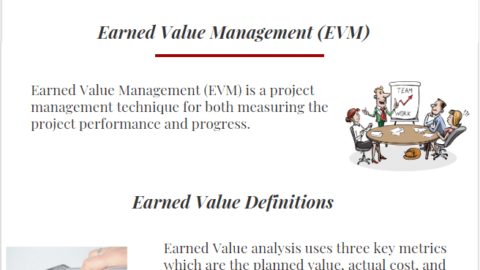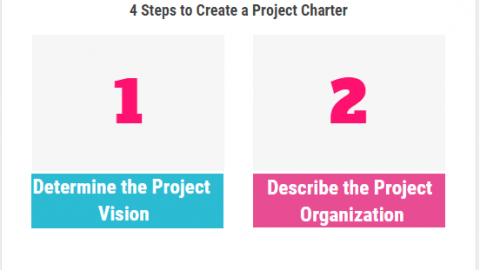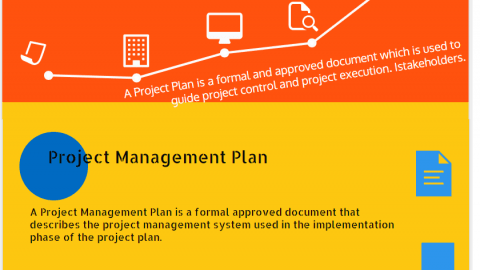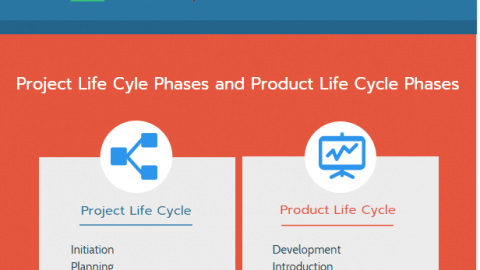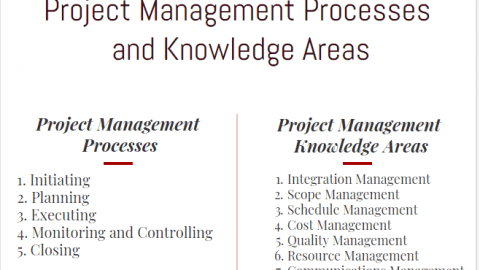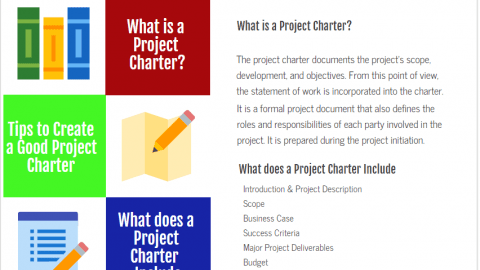Team Responsibilities in Project Change Management Process
A change is described as any deviation from the baseline documents and underlying assumptions that impact the project’s scope, cost, or schedule. This guideline will define the change management process; the method and obligation relating to the identification, documentation, review, approval, management and integration of changes to the scope, cost, and schedule of the project. It will also describe the responsibilities of each member of the team or change management group working under the project director and the project manager.
Table of Contents
The primary objective is to establish a robust structure in which Trends and Changes can be validated, analyzed and agreed upon in a timely manner to minimize the impact on the project.
The Scope and Objectives of Change Management Process
The change management practice allows the project team to identify any change to the project baseline early, and in doing so, enable the control, management of changes and potential risks that could affect the project outcomes. The objectives of change management are as follows:
- Set up a change management system for the project
- Develop a method that allows anyone engaged in the project to initiate a notice of a potential change.
- Facilitate effective management and reporting of all changes, irrespective of origin.
- Deliver early warning and identification of trends (potential changes) to allow for timely assessment (scope, alternatives, cost and schedule) and decision making for work to proceed as required/approved.
- Expedite the processing and resolution of change impacts.
- Ensure that the project’s change management system is maintained and it correctly reflects the current scope changes, cost forecast and schedule impacts on an ongoing basis.
- Effective evaluation of trends and development of identified changes into approved budget reallocations and scope changes.
- Enable the change management validation against budget. Ensure that all changes are approved prior to implementation or commencement of any work.
- Ensure all approved changes are effectively communicated to all affected disciplines, groups and organizations.
- Prevention of unauthorized work being executed.
Baseline Documents
A clearly defined Scope of Work: each project team member is expected to understand his or her scope of work, baseline documents, and work plan, and is responsible for immediately communicating any changes before spending either time or money on such deviations without proper authorization.
Proper authorization is generally construed to be an approved Change order, Budget Shift, or Trend. Although in certain cases (authorized by the project manager) this may be written directly from the contract administrator to perform the work. When the contract administrator has provided written direction to perform the work, the Potential Variation Notice will still need to be submitted to maintain control and meet audit requirements.
As a guide, below are my suggested baseline documents that can be used for an effective change management process. These documents are developed during the bid proposal effort and contract negotiations prior to contract award.
- Project Development Plan
- Project Execution Plan
- Contract Scope of Work Cost Estimate (budget including effort-hours and material quantities, and estimate basis)
- Management Level Schedule
- Risk Assessment
- Commercial Baseline
Additional detail may be developed during the initial alignment process and communicated to the entire project team, but change management is measured against the project baseline documents.
The change management process provides project management with an early warning of conditions that might affect the project cost and/or schedule. This practice allows project management the opportunity to minimize or neutralize the impacts of the potential change.
Recommended Roles and Responsibilities in Change Management Process
Once the change was identified or in anticipation of a change, all personnel on the project are authorized to raise a Trend/Potential Variation Notice/Change Notice and must follow this practice to complete the required documentation for further processing.
Personnel are required to process change paperwork rapidly to minimize any risk to the project, particularly as some changes may have time-related contractual implications. The objective of the project is to identify changes as early as possible. Early identification is critical and will provide the team sufficient time to manage and mitigate the effect of any negative changes; the opportunity to influence the outcome of the change will likely decrease over time.
The cumulative effect of changes should also be adopted because it can greatly increase the cost impact of individual changes. Depending on the project, the cost of the cumulative effect of changes can be included in each individual change, or a separate change impact analysis can be developed quarterly.
Depending on the size of the project, the change management group on major projects, and/or otherwise project lead, and the team will be acting as the change management group, is responsible for:
- administering the change management process
- assisting the project team to identify and quantify potential changes
- providing estimating and forecasting services on identified changes
- facilitating communication of approved changes to the Project manager.
The change management group is led by a project lead, who manages the flows and developments, and reports the status of changes to the project team. The change management register and numbering system will be managed by the project controls. The change management group will be supported by a project controls team (cost/estimate/schedule).
Planning and cost control will assist as required on Trends/Potential Variation Notice/Change Notices as requested by the project manager. These roles will be utilized to expedite reviews and processing notifications received within the team or from contractors.
Project Manager
Reports to the project director and is responsible for:
- Overall management of the change management system.
Responsibilities of the Project Lead (or Change Management Lead)
Reports to the project manager and is responsible for:
- Setting up change management processes and procedures including maintenance, management, change management register, development of change, issue of event change number and ensuring proper sequence numbering system.
- Managing trend review meetings within a structured environment that ensures acceptable trends are processed into approved changes
- Coordinating approved changes and ensuring that they are distributed to the project team for execution and inclusion into the project baseline.
- Ensuring proper establishment and use of the change management system and trend registers.
- Review all Changes for impact on overall project schedule and milestones.
- Ensure that approved changes are incorporated into all schedules and reported.
- Supporting project team in all aspects of change management, including expediting reviews and approvals.
- Organizing and holding regular change management meetings with the project teams and/or with stakeholders
- Providing summary, reporting of changes and monitoring impact on project growth allowances and contingencies.
- Ensuring changes received comply with the change management system and issue approved changes to the team for further action.
- Manage the central filing of change documentation, assuring proper document control over change documentation.
Responsibilities of the Originator
All personnel on the project team are authorized to:
- Raising the Trend/Potential Variation Notice/Change notice form.
- Providing a full and detailed description of the proposed change.
- Providing a description of the current design.
- Providing full and detailed justification for the change.
- Identifying any impacts the change might have.
- Submitting the completed form to the project lead/project manager.
Planner
Reports to the project controls manager and is responsible for:
- Reviewing all changes for impact on overall project schedule and milestones.
- Ensuring that approved changes are incorporated into all schedules and reported.
- Monitoring, analyzing and reporting status of all approved schedule changes.
- Ensuring that resource forecasting includes approved changes.
Cost Controller
Reports to the project controls manager and is responsible for:
- Providing cost control assistance to the change control process.
- Reviewing changes submitted for compliance with project coding systems.
- Updating forecast in cost system to reflect approved trends.
- Updating cost system, budgets and commitments with approved changes
- Providing cost report budget vs revised budget
- Reporting the impact of all approved potential variation notices on the cost and schedule forecast.
Estimator
Reports to project controls manager and is responsible for:
- Preparing and assisting with the development of estimates and backup documentation to support identified changes.
- Reviewing estimate details from external sources and advising the team of findings.
Document Controller
Reports to project controls manager and is responsible for:
- Management of correspondence and change management document.
Reference
A Basic Guide to Change Management by Rodel Marasigan

Over 35 years in the construction industry of combined working experience in the field of oil & gas refinery, pharmaceutical plant, waste water treatment & recycle water treatment plant, high rise building, module assembly, on-shore pipeline installation, power plant, industrial plant, heavy civil and Rails & Railways infrastructure. With a strong professional experience in all engineering works, advance computer knowledge and skills, strong leadership, motivation and can work independently. Has a professional background as Project Controls, Lead Planner, Snr Cost Engineer, System Analyst, Cost Analyst, Bid Estimator, Contract Management/ Administrator and Quantity Surveyor.


